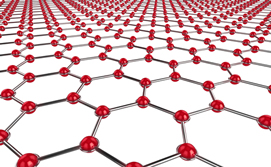The company from San Sebastián Graphenea is pursuing the manufacture of larger and more pure graphene sheets than are currently being synthesized. Only three companies in the world are competing with the Spanish firm at this level.
Graphene is a latest generation material, discovered in 2004 by two Russian researchers, Andre Geim and Konstantin Novoselov, both of whom received the Nobel Prize for Physics in 2010. This material is a member of a broader family of structures, in which carbon atoms join together in flat sheets that are one million times slimmer than a sheet of paper. They form a hexagonal honeycomb with one atom at each vertex.
This material could revolutionize the computing and electronics sectors in a few years, given that it is one hundred times more conductive than silicon. This will allow the manufacture of computers that are much faster than is currently possible, batteries that have great capacity and solar panels that are much more efficient. It is worth highlighting, among its main characteristics, its great elasticity and hardness, in addition to its high thermal and electrical conductivity, plus the fact that it is 200 times stronger than steel.
In 2004, Geim and Novoselov used adhesive tape to pull up thin flakes of graphene from a piece of graphite. Currently Graphenea, in collaboration with San Sebastián’s Nanotechnology Research Center (CIC nanoGune), has already made the first samples using a different method called “chemical deposition”. This system is a chemical process that exposes the material to one or more volatile precursors, which react and decompose on the surface of the substrate, producing the desired deposit.
